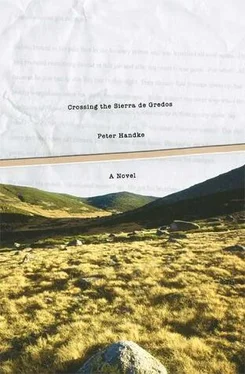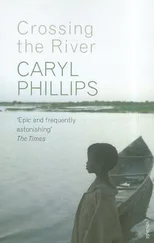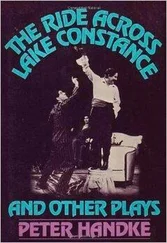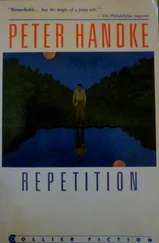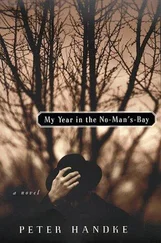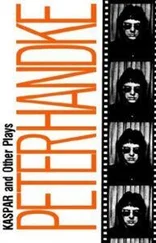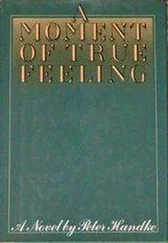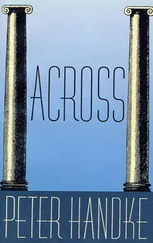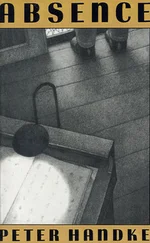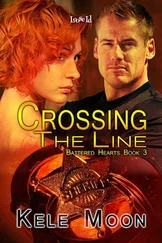These were special farewells, bearing no resemblance to the cheerful goodbyes among the members of the fortuitous group. The necessity of parting forever, or for an undetermined length of time, now hung over them, after they had been so close, which here in their Sierra had always been precarious. These people inside and outside of the bus, taking final leave of each other only with their eyes, wide open, without winking or blinking, had survived something together in this place, something so terrifying and incomprehensible that it surpassed any local epidemics, famines, or natural disasters, something every moment of which would remain indelibly imprinted on their collective memory; memory? the present, memory as a present that would continue to rage. And after a shared survival like this, the necessity of parting was all the more painful: from now on, this person here and that person there would have to survive alone, bitterly alone with his remembering, with this experience constantly before his eyes.
The bus driver’s return. The door closing. Pulling out. The accompanying friends rapidly disappearing. The square cleared. Along with the haze of bitterness, the square remaining filled with a powerful, lingering sense of intimacy or — equally heartrending — affection, which she, the fruit and feather thief, the last person left on the square, thought she could taste with her tongue and palate. “Really? Tasting a feeling?”—“Yes, feelings as sustenance! And what sustenance! It just depends on the feeling.” Above the square, on the mountain crest far in the background, still the thick wall of the barrier cloud. And an apple had been lying on the roof of the bus.
Later, during her visit to the author in his village in La Mancha, she proposed another title for their book: The Liturgy of Preservation. Even very early in her life, it had pained her to leave a place that meant something to her. Not so much her village or one of the other places where she had spent time, but some way station or other, where, for a brief moment, “life had appeared” (didn’t that phrase occur in one of the Gospels?), or where for a moment one had felt a breath of something, if only from a wind-tossed tree outside the window.
She had experienced pain, not for herself, the one who now had to leave the place, but for the place itself, “in person.” She sensed, she thought, the place needed her and her attention, her scrutiny, her involvement in and appreciation for as many particulars as possible — something that went beyond recording, posting, and adding. That was how it should be, for the place deserved recognition, as well as gratitude; that was fitting (“Do people still say that?”—the author).
And thus every time she set out from such a “coach stage,” she felt she must — observe again her smile at this “I must”—record the place visually, one look at a time and at every step. Wherever she went, or, as now, stood still, she impressed upon herself one spot and one thing (such as a person) after another; she noted the number of steps leading up to a front door here, the creaking of a wooden staircase there; took in the color of a rock, the shape of a door handle, the smell from a sewer grating, and so on: a consistent process despite the marked differences among the objects “entrusted” to her, which lent a coherence and a rhythm to the way station she was about to leave, a process she referred to as the “liturgy of preservation,” and which she wanted the author to translate into images and sentences, into the coherence and rhythms of prose, so that it might endure as long as possible. “Yes, I am seeking whatever eternity is possible for human beings,” she told the author, who replied, “And I want to be transitory,” whereupon she could be heard to say, “That is not a difference or a contradiction.”
Accordingly, that morning she surveyed Pedrada, the stone-casting settlement. She must not make a sound; must not wake anyone. Downriver on the Tormes, mill wheels were turning, new ones, which had nothing to do with the mills from previous centuries, in ruins now, overgrown with brush. Electrical pylons marched in from the opening of the valley, far off to the west, where the town of El Barco de Ávila lay, making their way up here, likewise new, as if installed overnight.
On the other side of the village stood a telephone booth, already partway out into the snow-dotted rocky wilderness, empty, with the rising sun shining through it, showing the impressions of the users’ hair, forehead, and fingers on the glass. The feeder brooks still had no fish, as did the first stretch of the river, where they converged — but past a certain spot, right after the first bridge, suddenly the lengthwise flashing of hundreds of trout through the water, tiny little finned bodies, but masses of them, water-colored, almost transparent, and not a trout in these dense swarms would have passed an invisible line on its way upstream, even if it was swimming ahead of the others, as if this line straight across the río Tormes barricaded its source area, reserved for frogs and dragonflies and off-limits to any kind of fish: their sudden hesitation there, hovering for a while motionless on the riverbed and then slowly turning and whipping back downstream.
At last she had bestirred herself and was zigzagging through the late-sleepers’ village, treading as lightly as possible. The notion that the items included in such a liturgy of preservation would also constitute a sort of letter, addressed to someone or other who was already waiting for it far away, and at the very moment when she was still engaged here in looking and listening, the letter was in the hands of its recipient; actually writing a letter was thus superfluous.
But could one really use the term “liturgy” for this kind of organizing, connecting, coordinating, rhythmicizing, setting in motion, loading the givens with the energy to reach a distant vanishing point? Wasn’t it more a sort of strategy? A strategy that was the very essence of the professional activity she had allegedly given up? Wasn’t it rather the case that even here, in the high Sierra, after she had, by her own admission, voluntarily withdrawn from the contemporary banking world, she could not resist looking for the “value” in objects, the element of value that could not be left to gather dust but had to be put into circulation, in combination with as many other such elements as possible, into constant, fruitful circulation?
Liturgy of preservation? Liturgy of accrual, with objects as capital? “That is true,” she replied, “insofar as on that morning in Pedrada it disturbed me to see that the only bank branch there, a very small one established at one time by my bank, had been converted into a sheep shed, and also chiefly because that bank building was perhaps one of the most remarkable in the entire world: the last cottage in the village and at the highest point, directly behind it ravines and the jungle of broom, hardly even a building, simply a hollow boulder used for money transactions, the one and only banking facility in a natural cavern: a block of granite equipped with a counter and a vault, the stone head or stone brain, so to speak, above stony Pedrada, the most remote branch of the twenty-story plate-glass headquarters situated by the mouth of the two northwestern rivers.
“And it is also true that I am looking for the capital in the givens. And I should like never to give up this search. And on that morning in Pedrada, too, I was looking for the one bronze dewdrop among the other water-clear ones. But there was no dew. Instead I found, here and there, baked into the granite outcroppings, a little chip of mica, which for moments in the sun became dark bronze among all the others that merely glittered. And from a number of tent-houses hung black mourning bunting, faded and torn, many years old. And several of those leaving the village and those accompanying them had worn similarly quite faded mourning bands on their arms.”
Читать дальше
